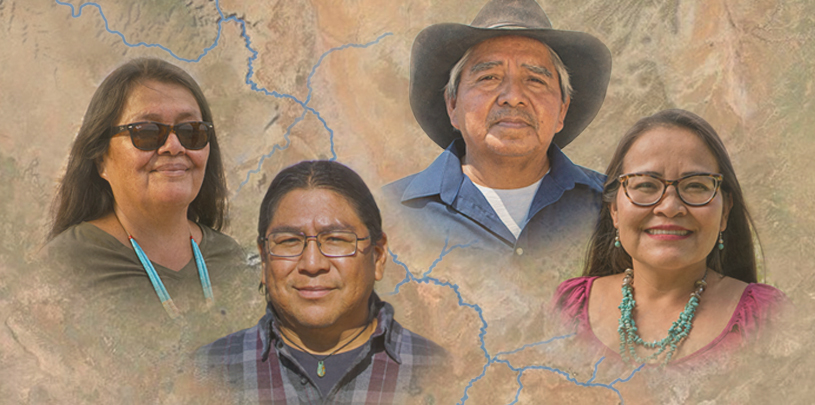
 by Sarana Riggs, Grand Canyon Manager
by Sarana Riggs, Grand Canyon Manager
The Little Colorado River has been home to many for generations. It sustains all life forms, from its headwaters high in the White Mountains to the depths of the Grand Canyon. For much of its length, the Little Colorado River relies on snowmelt, runoff, and spring water from its tributaries. Turquoise or red, dry or flowing, the Little Colorado River gives life to plants, animals, and people in the Southwest.
Indigenous peoples have forever lived along the Little Colorado River. It connects White Mountain Apache, Zuni, Hopi, Navajo, Paiute, Havasupai, Hualapai, and many other tribes to each other and to the Grand Canyon. It has been said this river is like an umbilical cord that connects all to the emergence place of our Mother.
As our ancestors before us, we pray to waterways so they may provide food and sustenance to our communities and families.
Here, sheepherders, scientists, educators, farmers, artists, and activists share their personal and cultural connections to the Little Colorado River.
View in Full Screen (suggested for mobile)
“Lifeways of the Little Colorado River” is a new collection of stories, videos, audio clips, and art that offers a glimpse of the river’s many faces.
Since time immemorial, this river has been a place of physical and spiritual nourishment. It carries prayers, supports livestock, and provides medicines along its banks. The Little Colorado River is a corridor into the Grand Canyon to collect salt, minerals, and other ceremonial items.
With every storm, a little bit of the earth gets washed downstream, nourishing the lands and cultures through which it flows. For millennia, the river has endured alongside communities and all living creatures.
80% of Arizona voters support Baaj Nwaavjo I'tah Kukveni National Monument, according to a new poll.
Read MoreThe Colorado River below Glen Canyon Dam is heating up. Find out why.
Read MoreGroundwater pumping at a uranium mine near the Grand Canyon will affect the canyon's springs, scientists says.
Read More